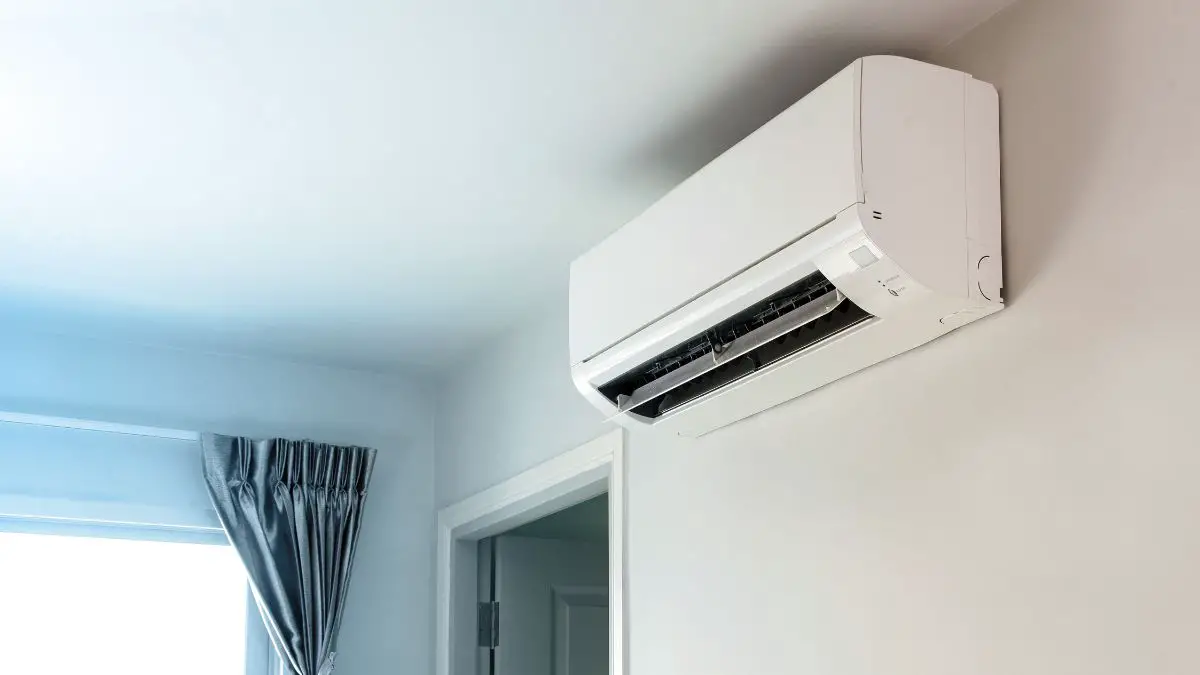You’re gearing up for summer, which means one thing – it’s time to crank up the air conditioning! You’re likely among the many who rely on their AC to keep cool throughout the hot season. Some folks use their air conditioners for up to 75% of the year. But with many air conditioner types, you might wonder which suits your needs best.
You have many air conditioner types, each serving a specific purpose. Central ducted air conditioning systems cater to the entire house, while ductless mini-split systems are perfect for homes, apartments, condos, and garages, minus the ductwork.
For smaller open spaces ranging from 100 to 650 square feet, stand-alone ACs like window and portable units are your best bet.
Let’s dive into some statistics about air conditioning and explore the diverse types of air conditioners available in the market.
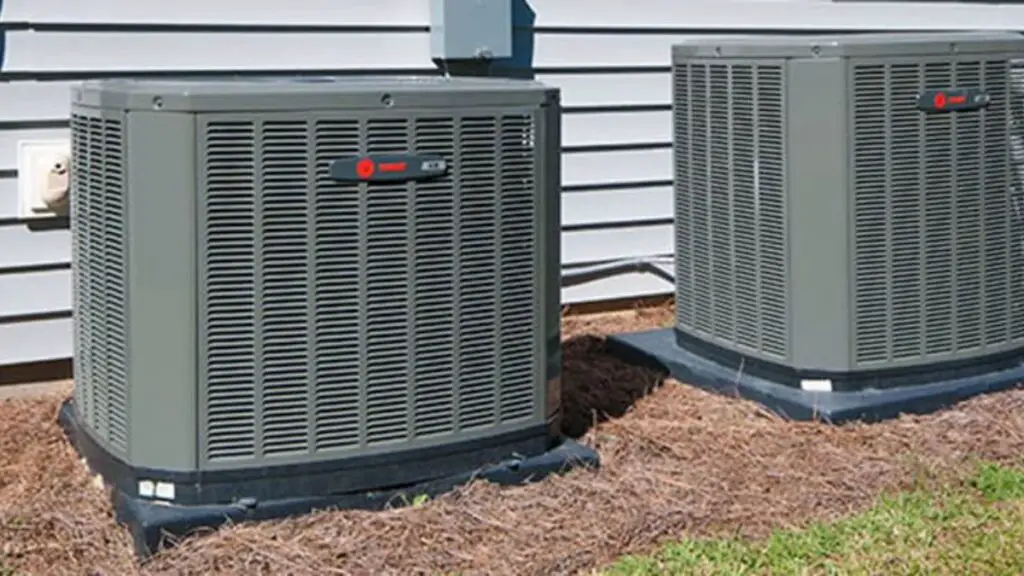
Understanding Air Conditioners Categories
Air conditioners fall into three primary categories, each offering different types of air conditioners tailored to your unique needs.
Central Ducted Air Conditioner Systems and Heat Pumps:
These systems utilize ductwork to circulate cool air and encompass a range of package systems, such as:
- Self-contained systems that house all system components within a single container.
- Split systems featuring two main components – an indoor unit linked to an outdoor unit via refrigerant tubes.
- Central air conditioner
- Air source heat pump
- Dual fuel heat pump
- Ground source heat pump (geothermal)
- Water source heat pump
- Evaporator system (swamp cooler)
Ductless Mini-Split Heat Pump:
These highly energy-efficient air-source systems do away with ducts, can be single- or multi-zoned, and comprise an indoor cassette and outdoor condensing fan. Cassette types include:
- Ductless mini-split heat pump
- Wall-mounted cassette
- Floor-mounted cassette
- Ceiling-mounted cassette
Stand-Alone Air Conditioners
These are ideal for small spaces, typically covering 100 to 650 square feet. These include:
- Window air conditioner
- Portable air conditioner
- Through-wall air conditioner
Now that you’re familiar with the vast array of air conditioning options, it’s time to select the ideal system for your home. We’ll examine central ducted systems, ductless mini-split systems, and stand-alone units. Plus, we’ll provide a handy buying guide highlighting key factors to consider when purchasing each type.
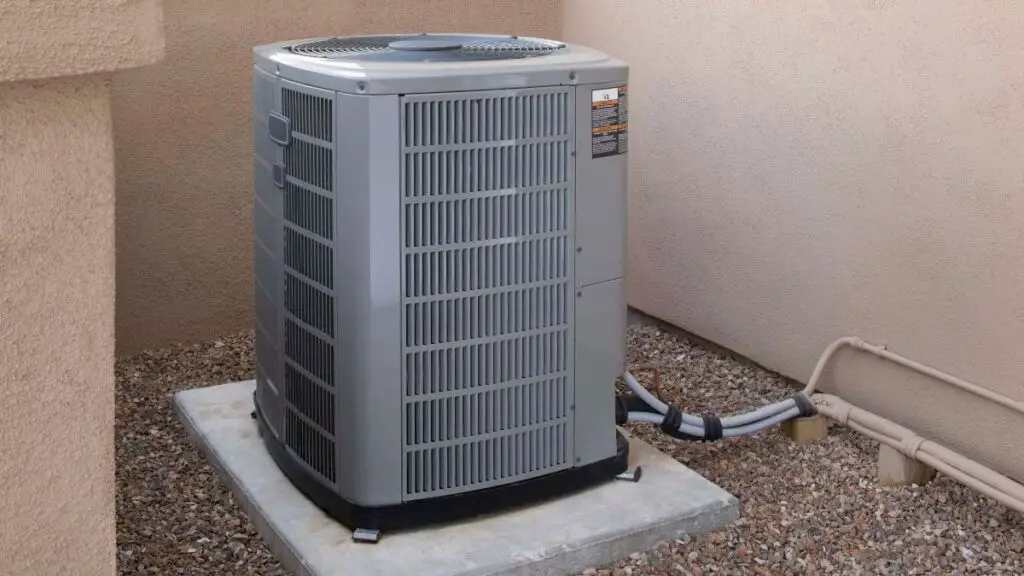
Different Types Of Air Conditioners
Air conditioners have a fascinating history. They were not always the sleek, efficient machines you see today. The concept of air conditioning dates back to ancient times. The ancient Egyptians, for instance, hung wet reeds in their windows to cool the incoming breeze.
In the 20th century, Willis Carrier invented the first modern air conditioner in 1902. This game-changer paved the way for the diverse range of air conditioning systems today.
Today, air conditioners are more than just a luxury. They are necessary, providing comfort and improving the quality of life for millions worldwide. They play a crucial role in homes, offices, hospitals, and many other settings, making hot summers bearable and improving indoor air quality.
Various air conditioners are available today, each designed to suit different needs and preferences.

1. Central Air Conditioner
A central air conditioner is your top choice for cooling when dealing with a house with six or more rooms or spans over 2000 square feet.
Working with the blower and evaporator coil inside your furnace, a central air conditioner circulates air through ducts installed throughout your home. This system is often referred to as a central ducted system. You’ll find these systems in two main forms: split or package systems.
Package Systems
A gas package system is an all-in-one solution using natural gas or propane as the primary heat source, combined with an in-built electric air conditioner. Positioned outside your home, these systems connect to ductwork that delivers air conditioning to multiple rooms in your home. Typically, they are one-zone systems with ductwork situated inside the crawl space.
Split Systems
On the other hand, a split system features an indoor electric or gas furnace coupled with an outdoor condensing unit housing the compressor.
The outdoor condenser unit is the air conditioner, while the indoor furnace houses the evaporator coil and blower required for the air conditioner’s operation.
The refrigerant travels between the two systems via copper tubing. The refrigerant enters the air conditioner super-heated, is rapidly cooled to eliminate heat, and then returns to the blower. Here, it cools the air before distributing it throughout your home.
For a cutting-edge home experience, you can pair smart thermostats with central air conditioners.
Pros
- Central air conditioners are highly efficient at cooling large spaces and multiple rooms simultaneously.
- As the main unit is located outside, the noise level inside your home is significantly reduced.
- These systems often include air filters that remove airborne particles, improving indoor air quality.
- When paired with smart thermostats, you can control and monitor your home’s temperature remotely.
Cons
- The purchase and installation of a central air conditioner can be expensive.
- Due to their size and power, these systems can lead to higher energy bills.
- Central air conditioners require ductwork throughout your home, which can be costly and disruptive to install if not already in place.
- Regular maintenance is required to keep the system running efficiently, which can add to the overall cost.

2. Air Source Heat Pump
An all-electric system resembling a central air conditioner system, an air source heat pump stands out with its ability to provide energy-efficient air conditioning and heating, thanks to a reversing valve.
This reversing valve switches the refrigerant flow from heating to cooling mode, making these systems versatile. Air source heat pumps can be either split or package systems.
Package Systems
A package system is a self-contained unit that houses the evaporator coil, blower, compressor, and fan all within a single system. Positioned outside your home, it connects to ductwork that delivers air conditioning to multiple rooms in your home. Typically, they are one-zone systems with ductwork situated inside the crawl space.
Split Systems
A split system features an indoor air handler that contains an evaporator coil and blower, coupled with an outdoor condensing unit housing the compressor.
The refrigerant travels between the two systems via copper tubing. The refrigerant enters the outdoor condenser super-heated, is rapidly cooled to eliminate heat, and then returns to the air handler. Here, the blower distributes cooled air throughout your home. In heating mode, this process reverses refrigerant flow to heat the home.
Split systems can be multi-zone by adding damper doors into the ducts controlled by thermostats. You’ll need a thermostat to control each zone.
Programmable thermostats can control heating and cooling modes through auto settings to provide a smart home experience utilizing cutting-edge, best heat pump technology.
Pros
- Provides both heating and cooling.
- Uses less energy than traditional heating systems.
- Lower operating costs compared to conventional heating and cooling systems.
Cons
- Higher initial cost than other systems.
- Efficiency can decrease in extremely cold climates.
3. Dual Fuel Heat Pumps
A dual-fuel heat pump is a unique combination of a gas furnace and an electric air-source heat pump, offering cost-effective and efficient heating and cooling performance. The system alternates between burning fossil fuels and using electricity based on the outdoor temperature.
You can set the temperature at which the system switches from the heat pump to the furnace or manually make the switch. The heat pump’s cooling and heating functions reverse during the summer season.
The heat pump extracts hot air inside your house, removes the heat, and expels it outside. The furnace steps in when the temperature is too low for the heat pump to work effectively.
The main advantage of a dual-fuel heat pump is that when temperatures drop below freezing, the gas furnace provides backup heat rather than electric heat strips, which are highly inefficient.
With a dual-fuel heat pump, you won’t face high electric bills as you would from electric heat strips in cold weather. The gas furnace is more efficient than emergency heat strips in conventional heat pumps and only operates when necessary.
A dual-fuel heat pump can quickly cool a home’s temperature like a regular air conditioner. The home’s interior cools by reversing the heat over a sequence of coils with refrigerant to lower the temperature.
A dual-fuel pump might be expensive to purchase. Compared to other HVAC systems, they’re relatively new, and some smaller HVAC companies still aren’t dealing with them. If you live in a populated area, you should find a contractor.
Pros
- Provides efficient heating and cooling by switching between gas and electric power.
- It uses gas heat in colder temperatures, which is more cost-effective than electric heat.
- It can heat and cool your home.
Cons
- Higher upfront cost compared to other systems.
- As a newer technology, not all HVAC companies may offer them.
- Requires a more complex installation process due to the dual nature of the system.

4. Ground-Source Heat Pumps (Geothermal)
Geothermal heating and cooling is an innovative technology that leverages the earth’s insulating properties. Given that temperatures beneath 4 to 6 feet of soil remain constant throughout the year, geothermal technology utilizes this feature to heat and cool your home more efficiently.
Geothermal cooling, a relatively recent and energy-efficient technology, is rapidly gaining traction worldwide.
The earth’s temperature stays relatively steady at 55 degrees Fahrenheit year-round thanks to its insulating qualities. This consistent ground temperature, regardless of the weather, is a key factor in the effectiveness of geothermal technology, enabling more efficient heating and cooling of your home compared to other technologies.
A piping system, often called a “loop” or “ground loop,” circulates water between your home, a heat pump, and the ground. Depending on the site’s topography, these polyethylene pipes can be laid vertically or horizontally.
In the winter, water flows through this earth loop, absorbing and storing heat from the ground. The heat is then compressed, raising the temperature, and delivered back into your home.
During the summer, this cycle reverses. The heat pump extracts excess heat and transfers it to the ground. The cooled air is then circulated throughout your home via ductwork.
This technology doesn’t rely on fossil fuels to generate cooling or heating. However, electricity is still required to operate the compressor, fan, and pump. You can power a geothermal system with solar energy for a completely green setup.
In Europe, geothermal heating and cooling is used in over 70 percent of new houses. More than 70% of new homes in Switzerland and Sweden now utilize geothermal technology.
Pros
- Geothermal systems are highly energy-efficient, reducing energy consumption and costs.
- These systems do not burn fossil fuels, making them environmentally friendly.
- Due to the constant ground temperature, geothermal systems provide reliable heating and cooling all year round.
Cons
- The upfront cost of installing a geothermal system can be high, although this can be offset by lower operating costs over time.
- Installation requires significant groundworks, which can be disruptive and may not be feasible on all properties.
- While they don’t burn fossil fuels, geothermal systems still require electricity to operate.

5. Water Source Heat Pumps (Geothermal)
Water source heat pumps present a fantastic option for harnessing green energy to cool your home. These air conditioners tap into the earth’s natural temperature and water to create a cooling effect in your home. Their high efficiency translates into savings on your energy bill each month.
A water source heat pump functions similarly to a ground source heat pump, but the loop pipes are submerged in water instead of buried in the ground. The water must be deep enough to avoid freezing in winter and overheating in summer.
The refrigerant solution circulates in the loop pipes, absorbing or releasing heat from the water source. Typical water sources include lakes, ponds, aquifers, and wells.
Installation costs for water source systems are lower than for ground source heat pumps, as digging ground trenches is unnecessary. The setup of water-source loop pipes is also more straightforward.
However, water source heat pumps may not be feasible if you lack a well, pond, aquifer, or body of water near your home where you can submerge the loop pipes.
A water source heat pump may require additional equipment for effective operation, such as a cooling tower for transferring heat back and forth inside your home.
Pros
- Water source heat pumps are highly energy-efficient, reducing energy consumption and costs.
- These systems use natural resources, making them environmentally friendly.
- Compared to ground source heat pumps, water source heat pumps are less expensive to install.
Cons
- These systems require a nearby body of water, which may not be available for all properties.
- May require additional equipment such as a cooling tower.
6. Evaporative Coolers (Swamp Coolers)
Evaporative coolers, also known as swamp coolers, may not be as popular as refrigerant air conditioners, but they offer a unique cooling solution. Unlike traditional air conditioners that use Freon, evaporative coolers operate entirely through air and water. The technology behind a swamp cooler is so simple that it dates back to ancient Egypt.
When air passes over or through water, it cools down. With this principle in mind, evaporative coolers take hot air from your home and cool it by drawing it through moisture pads. The cooled air is then distributed throughout your home.
Evaporative coolers are most effective in hot, dry climates. They also function as humidifiers and may not be suitable in areas with high humidity.
Swamp coolers consume significantly less power than traditional air conditioners, with the only electricity used for the fan’s operation. They also do not use Freon or emit carbon dioxide, making them environmentally friendly.
Pros
- Evaporative coolers consume less power than traditional air conditioners.
- These coolers do not use Freon or emit carbon dioxide.
- They can also function as humidifiers, adding moisture to dry air.
Cons
- They are only effective in hot, dry climates and may not be suitable in areas with high humidity.
- Evaporative coolers require regular maintenance to prevent mold and mildew growth.
7. Ductless Mini-Split Heat Pump

A ductless mini-split heat pump offers super-efficient operation for those seeking superior performance. Some ductless systems even allow for DIY installation. Ductless systems are an excellent choice for modern homes, apartments, offices, garages, and store buildings.
A ductless mini-split air conditioner pairs an outdoor compressor and condenser with one or more indoor units, also known as “cassettes.” These indoor units, which include air blowers, can be installed on the wall, floor, or ceiling, with the wall cassette being the most common option.
The indoor and outdoor units are connected by refrigerant-filled tubing, which transfers heat from indoors to outdoors.
Given their relatively small size and optimal placement in open spaces, these indoor wall-mounted units use heat pump technology for heating and cooling. Compared to other options, these ductless mini-splits can achieve up to 30 SEER ratings, indicating high energy efficiency.
Pros
- Ductless mini-split heat pumps are highly energy-efficient, with some models achieving up to 30 SEER ratings.
- These systems are suitable for a variety of settings, including modern homes, apartments, offices, garages, and store buildings.
- The indoor units are compact and can be installed on the wall, floor, or ceiling, saving space.
Cons
- Ductless mini-split heat pumps can be more expensive to install than other types of air conditioners.
- Some people may not like the look of the indoor units on their walls, floors, or ceilings.
- These systems require regular maintenance to ensure optimal performance.
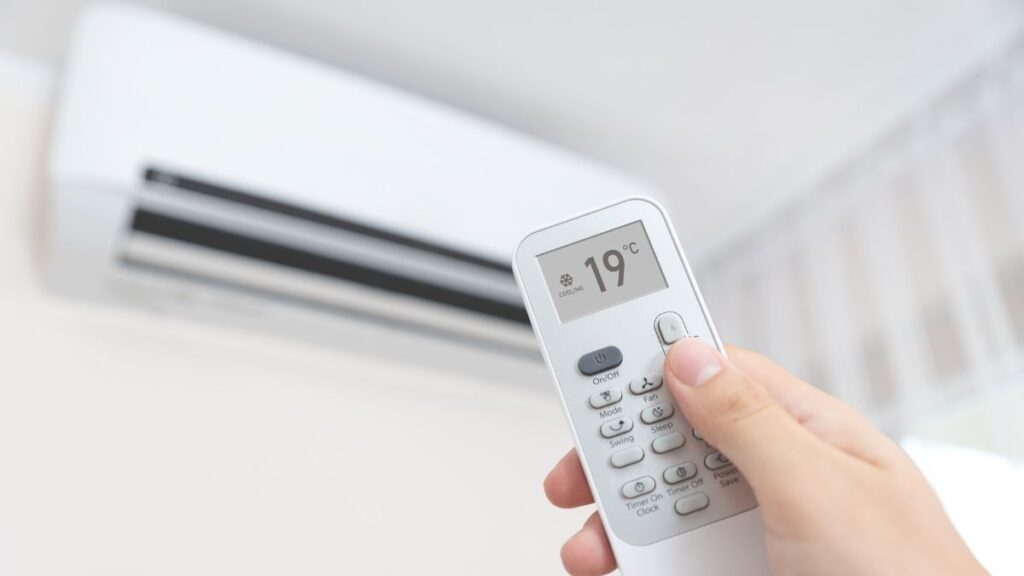
8. Wall Mounted Air Conditioner
Ductless wall-mounted air conditioners are an excellent solution for households with limited space. These compact units do not require ductwork and are controlled via a remote, eliminating the need for a thermostat installation. Some models even offer the convenience of using your smartphone as a remote.
Ductless systems feature washable and reusable air filters, making them easy to maintain.
Mini-split air conditioners are gaining popularity in the HVAC market due to their numerous benefits.
Benefits of Ductless Systems
- No Ductwork: As the name suggests, these systems do not require ductwork, making them suitable for homes where installing ducts is not feasible.
- Lower Installation Costs: Ductless systems are generally less expensive to install than central ducted systems. Some units even offer DIY installation.
- High Energy Efficiency: Most ductless systems boast high SEER ratings of 20 and above, indicating excellent energy efficiency.
- Multi-Zone Capability: Ductless systems can be multi-zone, with two or more cassettes connected to a single outdoor compressor.
The compressor, which generates the most noise, is located outside the house, making these systems quieter than central systems.
A ductless mini-split typically includes one outdoor and one indoor unit, with a capacity ranging from 6,000 to 12,000 BTU. Larger capacity systems can handle multiple rooms, with the BTU increasing accordingly.
| Zones | Average BTU |
|---|---|
| Two indoor units | 24,000 |
| Three indoor units | 36,000 |
| Four indoor units | 48,000 |
| Five indoor units | 60,000 |
Inside your home, you could have three indoor units of 9,000 BTU, 12,000 BTU, and 15,000 BTU, respectively. Outside, you’d have a larger, louder condenser fan. This type of system has a 36,000 BTU capacity, surpassing the capabilities of any stand-alone air conditioner.
Pros
- These compact units are perfect for homes with limited space.
- Most models have high SEER ratings, indicating excellent energy efficiency.
- The washable and reusable air filters are easy to clean.
Cons
- While some models offer DIY installation, others may require professional installation.
- Some people may not like the look of the indoor units on their walls.
- While quieter than central systems, the outdoor compressor can still generate noise.
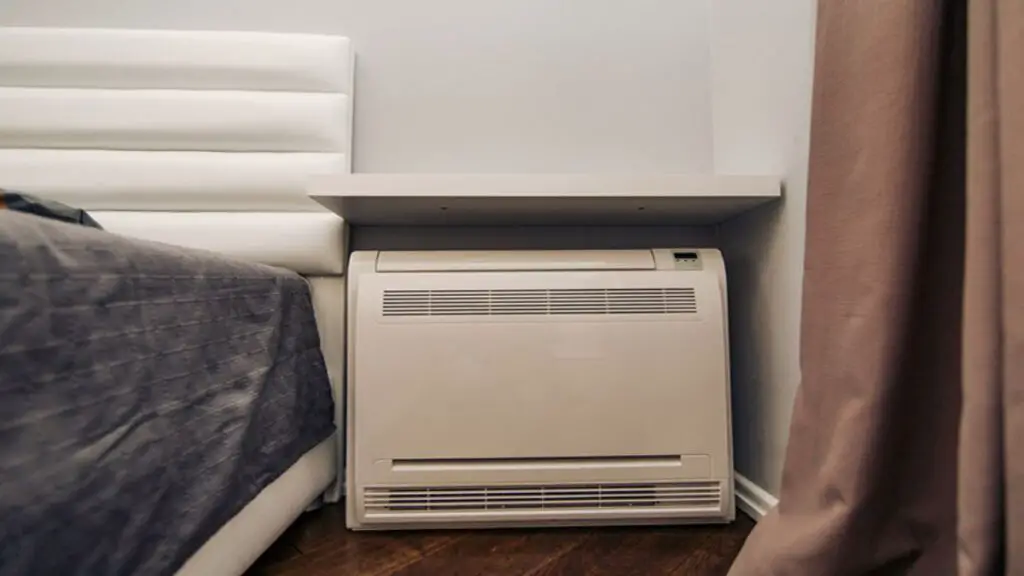
9. Floor Mounted Air Conditioner
Floor-mounted air conditioners share many similarities with wall-mounted units, with the primary difference being their installation location. As the name suggests, floor-mounted air conditioners are secured on the floor rather than mounted on the wall.
These units are an excellent choice for those who desire a mini-split system but lack the wall space for a wall-mounted unit. The indoor floor-mounted air conditioner unit is placed in the room while the compressor is outside.
Installation involves securing the unit six inches above the floor and connecting it to the outdoor unit through a hole in the wall. This hole allows for the passage of refrigerant tubes to the condenser.
One significant advantage of floor-mounted air conditioners is the ease of checking the air filters. These filters are washable and reusable.
Floor-mounted mini-split systems can cool and heat rooms faster than other installation methods since the fan blows air directly at your level. In contrast, units mounted high on the wall may struggle to cool the space uniformly and efficiently.
However, floor units require open space around them for optimal operation and efficiency. It’s important not to obstruct the AC with furniture, as this can disrupt air circulation.
Pros
- These units are perfect for homes with limited wall space.
- The fan blows air directly at your level, allowing for quicker and more efficient cooling and heating.
- The washable and reusable air filters are easy to clean.
Cons
- While some models offer DIY installation, others may require professional installation.
- These units require open space all around them for optimal operation.
- Some people may not like the look of the indoor units on their floors.
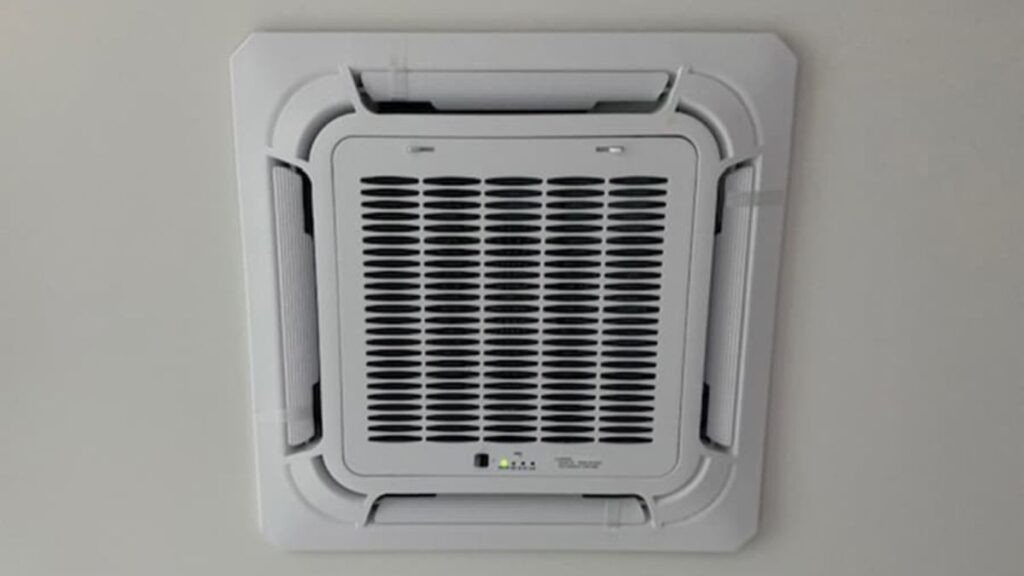
10. Ceiling Mounted Air Conditioner
Ceiling mounted air conditioners, also known as cassette air conditioners, are typically best suited for commercial spaces but can also be an excellent addition to your home. These units can be installed on both flat and slanted ceilings.
One of the main advantages of ceiling air conditioners is their aesthetic appeal and power. They boast a modern look, do not protrude from a wall or the floor, and are generally more expensive than wall-mounted units. The only part of the unit visible from the room is the four outlet louvers, making them suitable for businesses like restaurants, doctor’s offices, and salons.
Due to their ceiling location, these units direct cooling air vertically rather than horizontally. While most air conditioners are wall-mounted and distribute air horizontally, ceiling-mounted units blow air downwards, providing a unique cooling experience.
Pros
- Ceiling mounted air conditioners have a modern look and do not protrude from a wall or the floor, making them an attractive option.
- These units are typically more powerful than wall-mounted units, providing efficient cooling for larger spaces.
- The unique vertical air flow can provide a more even distribution of cool air.
Cons
- Ceiling mounted units are generally more expensive than wall-mounted units.
- Installation can be more complex and may require professional assistance.
- Given their location, these units may be more difficult to maintain and clean.

11. Window Air Conditioner
Window air conditioners come in various sizes and can cool a single room or a small space. Opting for a larger window air conditioner can effectively cool a more extensive open area.
Long recognized as an alternative to larger HVAC systems, window air conditioners are commonly used for cooling small spaces and are the most prevalent type of air conditioner.
A window air conditioner is a single unit that houses all the components. It expels heat from its outdoor side and blows cool air into the room from its indoor side. As the name suggests, it’s installed in a window or through a hole in the wall.
These air conditioners often feature a slide-out filter for easy cleaning, front controls and may also include a remote control.
Despite their convenience, window AC units do present some challenges. Even when mounted on the wall, the wall should not be thicker than 9 inches. Thicker walls can often restrict airflow and make your window AC unit less energy-efficient than other types of air conditioners.
Window air conditioners are less expensive and easier to install than split-system units. Some advanced models can even provide heating during the winter months.
Pros
- Window air conditioners are generally less expensive than other types of air conditioners.
- These units are easier to install than split-system units.
- Some advanced models can provide both cooling and heating.
Cons
- These units are designed to be installed in a window or through a wall no thicker than 9 inches.
- Thick walls can restrict airflow and reduce the unit’s energy efficiency.
- Some people may not like the look of a window air conditioner in their window or wall.
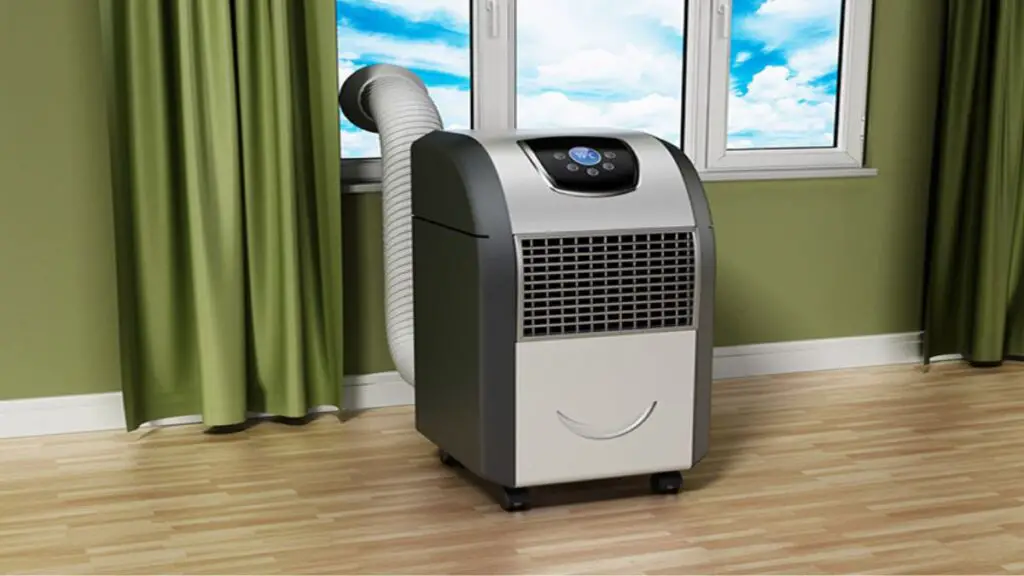
12. Portable Air Conditioner
Portable air conditioners are similar to window units but offer the added benefit of portability. These units can be moved from room to room, requiring only a power outlet and a window for the unit’s exhaust duct.
Portable air conditioners are an excellent choice for temporary cooling or when installing a window or split air conditioner isn’t feasible. These compact units can be used in various spaces, including pet kennels or bathrooms.
Portable air conditioners can be single-hose, drawing in air from the room and expelling it outside, or double-hose, which pulls air from outside through one hose and cools the compressor with it.
The main advantage of these units is their portability, but moving the unit also means moving the air duct. Each portable AC unit has an air hose up to 10 feet long to vent the hot air outside.
Pros
- These units can be moved from room to room as needed.
- No need for professional installation.
- Suitable for spaces where window or split air conditioners can’t be installed.
Cons
- The evaporator fan, which evaporates condensation, can be loud on high settings.
- These units may not be effective in rooms larger than 500 square feet.
- Portable air conditioners typically use more energy than window units of similar size.
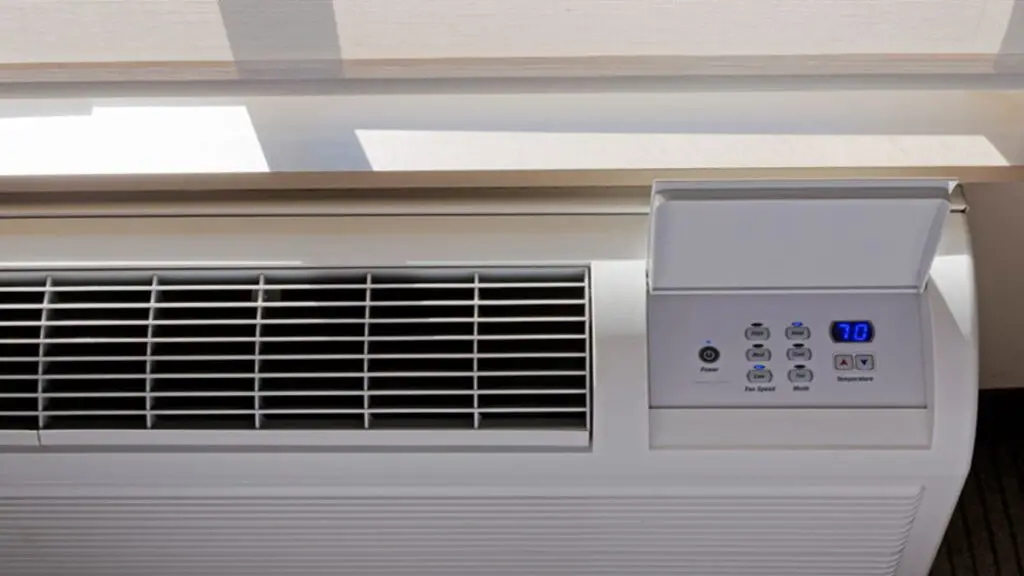
13. Through-Wall Air Conditioners
Through-the-wall air conditioners operate similarly to window units, using the same basic technology to draw in warm air and expel it. These are self-contained or “unitary” systems like window units and portable air conditioners.
For those who do not have access to windows, through-the-wall air conditioners offer an excellent alternative. However, they require some planning as they are permanently installed.
Installation involves creating a hole in an exterior wall and inserting a sleeve. These sleeves are necessary to support the weight of the air conditioner, as the wall alone isn’t strong enough. It’s recommended that a licensed contractor perform the installation, especially if it involves cutting into your home’s wall for the first time.
One of the advantages of a through-the-wall air conditioner over a window unit is that it doesn’t obstruct your window. Additionally, the airtight seal created by the installation makes the unit more energy-efficient.
Pros
- The airtight seal created by the installation makes these units more energy-efficient than window units.
- These units do not obstruct your window, freeing up window space.
- Once installed, these units provide a permanent cooling solution.
Cons
- Installation requires creating a hole in an exterior wall and is best done by a professional.
- The cost of installation can be higher due to the need for a professional contractor.
- Unlike portable or window units, these units cannot be easily moved or removed.

Your Ultimate Guide to Buying an Air Conditioner
When the weather heats up, air conditioning becomes a top priority. In fact, in 2020 alone, nearly 6 million room air conditioners were sold, showing a significant increase of almost 10% compared to the previous year. This surge in sales can be attributed to the shift in many people working from home, where having a comfortable indoor environment is essential.
To ensure you make the right choice when it comes to air conditioning, it’s crucial to understand the different types of air conditioners available. Selecting the right unit is essential for optimal cooling in your space, as an improperly sized air conditioner can leave a room either too warm or excessively chilled.
Understanding the Cost and Budget
The cost of cooling your home with an air conditioner can vary greatly, ranging from a few hundred to several thousand dollars, depending on the type of system you choose.
Determining the precise cost of an air conditioner can be challenging until you know exactly what features you require. To make an informed decision, assessing your needs and comparing prices from various vendors is advisable.
If budget-friendliness is a priority, window and portable air conditioners are excellent options. However, it’s important to note that these systems are designed to cool a single room at a time.
A ductless air conditioner or mini-split AC is cost-efficient for cooling one or two rooms. Remember that if you intend to use a single ductless system to cool your entire house, you’ll need to keep it running continuously, which can lead to higher energy expenses.
Smart ACs, available in window, mini-split, or portable variations, are slightly more expensive than traditional units. However, their energy-efficient features result in lower operational costs over time.
Although more expensive than stand-alone options, central air conditioning units offer greater efficiency. These units have a longer lifespan compared to portable or window air conditioners. It’s important to note that operating costs for central air conditioning units are typically higher.
While geothermal heating and cooling systems may be the most expensive upfront investment, they offer unparalleled energy efficiency in the long run. Geothermal systems are highly effective and efficient, outperforming other AC technologies currently available in the market. Investing in such a system can yield substantial dividends for many years.
You can decide based on your budget and cooling needs by understanding the different types of air conditioners and their costs. Consider factors such as energy efficiency, room size, and the unit’s overall effectiveness. You can beat the heat and enjoy a comfortable summer environment with the right air conditioner.
Maximizing Energy Efficiency with Your Air Conditioner
When it comes to air conditioning, optimizing energy costs is key. To achieve this, investing in an energy-efficient air conditioning system is important. One way to assess a system’s efficiency is by looking at its Energy Efficiency Ratio (EER) rating. The higher the EER rating, the more efficient the system is, so consider this when making your choice.
Another crucial factor is the Seasonal Energy Efficiency Ratio (SEER). Unlike the EER, which is calculated at a single temperature point, the SEER is determined over a whole cooling season at various temperature points. A higher SEER rating indicates a more energy-efficient unit.
Now, let’s explore some practical methods to help you save money on your air conditioning expenses while maintaining a comfortable temperature:
Related Reading: SEER2: The Evolution of SEER Ratings
Determining the Right Cooling Capacity
Choosing the appropriate British Thermal Units (BTU) for your air conditioner ensures efficient cooling. Use our BTU calculator to estimate the cooling capacity you’ll need for your space. BTU ratings typically range from 5,000 to 20,000.
When selecting the right BTU rating, Consider room size, ceiling height, insulation, sun exposure, site location, and climate. For rooms with ample sunlight, opt for air conditioners with 10% more BTUs than needed. If it’s for your kitchen, choose a unit with 4,000 extra BTUs. And if there are more than two occupants regularly, add 600 BTUs per person.
Space Requirements and Maintenance Ease
To ensure your air conditioner lasts for years, choose a unit that is easy to maintain and suits your home’s space requirements. Keeping it simple and hassle-free will contribute to its longevity.
Noise Levels
Window and portable air conditioners produce more noise than split systems. This is primarily because the entire unit, or the majority of it, is located indoors.
If you prefer a white noise effect, this might be appealing, but if you value a quiet environment for sleep, consider the noise factor when deciding.
Consider Window Location
For window air conditioners, it’s important to factor in the location of your window. Some units provide uniform airflow in one direction, so make sure the AC blows air in the right direction to cool your space effectively. Some window units come with a rotating fan or directional control to assist with this.
Proper Installation
Correct installation is crucial to maximizing your window air conditioner’s performance. Most units are designed to fit single-hung and double-hung windows. A through-wall air conditioner might be better if you have casement windows.
Ensure that your window unit is level to allow proper drainage. Additionally, if you live in an apartment or condominium, obtain permission from your landlord before installing an air conditioner.
Smart Cooling Options
Consider the smart features available in some air conditioners, which allow you to control and regulate them from your smartphone. Some models can even be integrated with other cooling systems in your home, providing enhanced convenience and energy management.
Check the Warranty
Lastly, when purchasing an air conditioner or split system, be sure to check the warranty provided by the manufacturer. Different brands and models may have varying warranty lengths, so it’s worthwhile to research and inquire about the specific warranty coverage for the unit you are interested in.
By considering these factors and making informed choices, you can ensure efficient energy consumption while enjoying the cooling comfort of your air conditioner.
Controlling Your AC Unit with Ease
When selecting an air conditioner, it’s important to consider the type of control system that suits your preferences. Different types of air conditioners offer various control options to cater to your needs.
Central air conditioning systems are typically linked to a thermostat. Once you’ve set your desired temperature, you can leave it be, and the system will automatically handle the rest, ensuring optimal comfort without manual intervention.
Pass portable or window units commonly use manual-response devices such as manual dials, digital keypads, and remote controls. With these devices, you’ll need to manually turn the unit on and off and adjust the settings as needed.
Ductless mini-split systems can cool different rooms or “zones” at precise temperatures. This flexibility allows you to cool specific areas where your family spends time while leaving others uncooled. This targeted cooling approach helps optimize energy usage and maintain personalized comfort.
Plug Types for Stand-Alone AC Units
Due to the high energy consumption of many air conditioners, some units cannot be powered by traditional wall outlets. Smaller portable and window units typically use standard 120-volt connections. However, larger units may require a 240-volt outlet, necessitating different terminations.
Plan to purchase one of these larger units. It will be necessary to have an electrician install a dedicated 240-volt outlet with a separate circuit specifically for your air conditioner.
FAQs About Types of Air Conditioners
What is the most energy-efficient air conditioner?
Ductless air conditioners, or mini-split AC units, are known for their energy efficiency. They cool specific areas without requiring ductwork, reducing potential energy loss.
How often should I service my air conditioner?
Generally, you should schedule a professional maintenance check at least once a year. Regular servicing not only ensures optimal performance but also extends the lifespan of your unit.
What size air conditioner do I need?
You’ll need about 20 BTUs of cooling capacity per square foot of living space. A 12000 BTU air conditioner can cool about 600 SF of living area.
Can I install an air conditioner myself?
While it might be tempting to install an air conditioner yourself, it’s generally recommended to have it installed by a professional. Installing a window AC unit can be a two-person job, as many weigh 60 to 90 lbs and need bracing.
How long do air conditioners last?
The lifespan of an air conditioner can vary depending on the type of unit, its usage, and how well it’s maintained. On average, most air conditioners last between 10 to 15 years. Regular maintenance can help extend the lifespan of your unit.
Conclusion
No matter what type of air conditioner you buy, you’ll likely need help. Even installing a window unit can be a two-person job as many weigh 60 to 90 lbs and may require bracing.
Before purchasing your system, contact an HVAC professional to discuss your AC needs. If installing a through-wall AC for the first time, you may need a licensed contractor to cut the opening.
When installing a ductless mini-split system, you’ll likely need an electrician to run the wire circuits from the panel to the outdoor fan and wall cassette.






